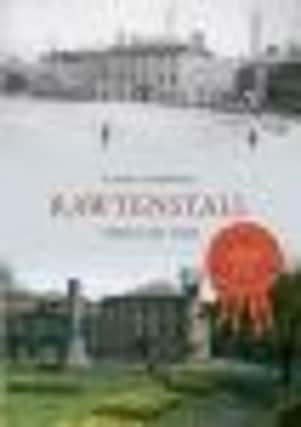Book review: Rawtenstall Through Time by Kathy Fishwick


Today it is known for two very different and distinctive features... its dry ski-slope, now recognised as one of the best in England, and as the home of the country’s last remaining Temperance Bar.
The rolling hills and dales around Rawtenstall offer some spectacular views and this fascinating new book records many older corners and buildings, some forgotten, some still fondly remembered, and more than a few still standing.
Advertisement
Hide AdAdvertisement
Hide AdUsing contrasting old and new photographs, Kathy Fishwick takes us on a voyage of discovery spanning over a hundred years of history, industrial development and growth.
In the early part of the 14th century, Rawtenstall and its surrounding countryside was part of the Royal Forest of Rossendale but, like much of this area of Lancashire, it rapidly expanded with the advent of the Industrial Revolution when mills producing textiles and footwear took over the landscape.
Water-powered mills carded woollen fleeces and spun thread while handloom weavers made cloth in their scattered farmhouses and then took it to market in Rochdale or Halifax using strong shoulders or the back of a packhorse.
In 1789 a turnpike road was built by John Metcalfe, known as Blind Jack of Knaresborough. Going west to east, the road went literally uphill and down dale creating a tough route for the trundling carts needed to carry increasing loads of goods.
Advertisement
Hide AdAdvertisement
Hide AdBefore long Rawtenstall had become a crossroads for trade routes and steadily grew into a thriving town. By the 1830s the main thoroughfare, now called Bank Street, was attracting prestigious buildings in keeping with a town aspiring to a promising future.
It achieved borough status in 1891, taking in many of the much older hillside villages around, although they managed to retain their individual pride and character.
Rawtenstall itself had grand aspirations, and although these failed to develop, many of the fine buildings of the Victorian and Edwardian periods remain as reminders of its important role in the 19th century.
Much was swept away in the 1960s, in preparation for a motorway to Burnley that never arrived. Farmland and industrial scenes have been replaced by housing estates and superstores, and village corners have been lost for road widening.
Advertisement
Hide AdAdvertisement
Hide AdNew trees and grassed areas cover the scars of vanished buildings but, as Fishwick’s powerfully nostalgic book reveals, here and there amid the traffic and tarmac, an isolated group of cottages or a view down a street can still recall the town that used to be.
(Amberley, paperback, £14.99)